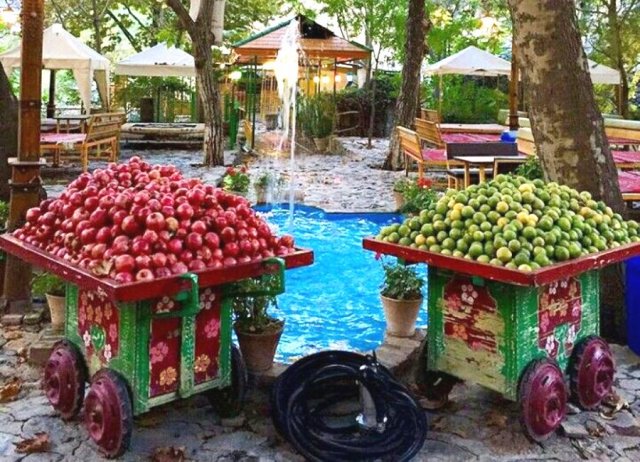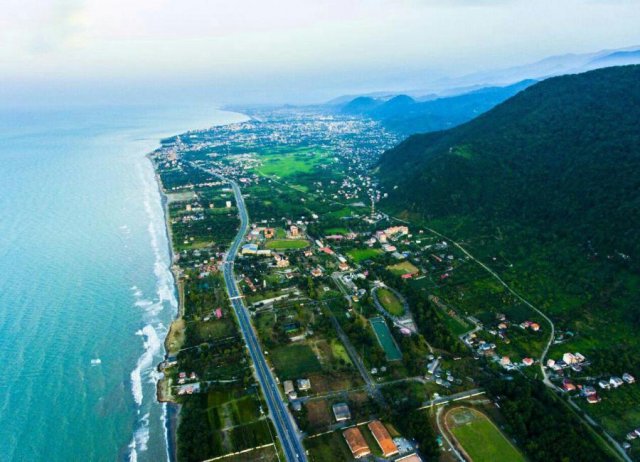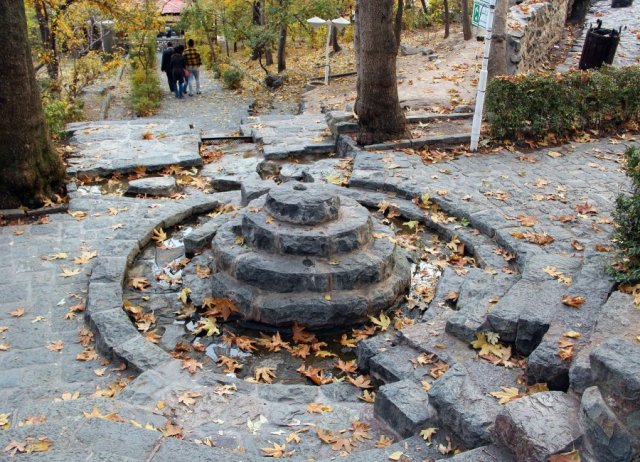Overview
Many travellers opt to bypass Kashan on their journeys between Tehran, Esfahan and Yazd, but this delightful oasis city on the edge of the Dasht-e Kavir is one of Iran’s most alluring destinations. It not only boasts a cluster of architectural wonders, an atmospheric covered bazaar and a Unesco recognized garden, but it also offers some of central Iran’s best traditional hotels.
Shah Abbas I was so enamoured with Kashan that he insisted on being buried here rather than in Esfahan. Other historical figures of note who are associated with the town include Abu Musa al-Ashari, a soldier and companion of the Prophet Mohammed whose army took the town in the 7th century AD. Legend has it that his troops tossed thousands of scorpions from the surrounding desert over the city walls causing the terrified Kashanis to capitulate.
During the Seljuk period (AD 1051–1220) Kashan became famous for its textiles, pottery and tiles, reaching high levels of accomplishment in each of these cottage industries. Currently local textile artisans are enjoying something of a renaissance of interest in their work, but mechanization has largely led to the demise of this ancient craft. Today the town is more widely known as a major center for the production of rose water, which is sold at outlets around the main tourist attractions and at dedicated stores in the bazaar.
A visit is April is rewarded not only with a perfect climate but with an air redolent with the fragrance of roses, grown in the surrounding fields.
Point of Interest
Outer Kashan
- Bagh-e Fin
Around Kashan
- Abyaneh Village
Sights
Most of Kashan’s sights are located in the old quarter, clustered around Alavi St and within walking distance of the bazaar. A few sights, such as Bagh-e Fin, the underground city of Nushabad and the ancient ruins at Seyalk, are scattered around the outskirts. At least a day and a half is needed to do all the sights justice and to relax into the town’s peaceful ambience.
Bazaar & Around
- Bazaar
Kashan’s historic bazaar is one of the best in Iran. Busy but not manic, traditional but with a nod at modern goods, large enough to surprise but not to get lost in, it’s a great place to wander for a couple of hours, especially in the late afternoon when the lanes are full of shoppers. The multi-domed roof of the bazaar dates from the 19th century, but the site has been the center of trade in Kashan for almost 800 years.
Two main alleys lead through the bazaar, one known as the ‘Main Line’, and the other as the ‘Copper Line’, which lives up to its name for at least part of its length. Step off either of these two thoroughfares, and there’s a wealth of caravanserais, mosques, madrasehs and hammams (public bath-houses) to explore. Chief among the attractions is the fine Amin al-Dowleh Timche, a caravanserai with a soaring, beautifully decorated dome. Dating from 1868, the caravanserai has recently been restored by the Kashani Culture & Heritage Office and is home to carpet sellers and the odd curiosity shop. There’s a tea stand at one of its entrances where you can sit and watch a steady stream of shoppers pass by. An equally popular tea stop is the cosy 19th-century Hammam-e Khan, where three generations of hammami tend to the well-being of their customers – replacing the tea and towels of former times with the tea and talk of today.
Other notable features of the bazaar include the Seljuk-era Masjed-e Soltani (Soltani Mosque), located on the Main Line and open only to men, and the 800-year-old Mir Emad Mosque, along the Copper Line.
Of course, a bazaar ought to be shopped in. If the hardware shops hold little attraction and the textiles fail to bring out your inner seamstress, there is at least rose water of the highest quality midway along Main Line or boxes of Kashani biscuits from one of the bazaar’s many patisseries – the nargili (coconut macaroons) are particularly delicious.
- Masjed-e Agha Borzog
Comprising four storeys, including a large sunken courtyard with ablutions pool, an austere dome, tiled minarets and unusually lofty badgirs (windtowers), this decommissioned 19th-century mosque complex is famous for the symmetry of its design. The wooden front door is said to have as many studs as there are verses in the Quran, and the mud-brick walls are covered with Quranic inscriptions and mosaics. A fine portal and mihrab (ting the direction of Mecca) at particularly noteworthy
- Sheibani’s Museum of Fine Arts
This beautifully restored old house, with a courtyard cut deep into the basement, houses the work of a popular Iranian painter, Manuchehr Sheibani. Credited as being a pioneer of the contemporary arts revolution in Iran, this 20th century painter was also a poet. Aside from the exhibition of his work, the house encompasses a cosy coffee shop and a small library, and makes a pleasantly cultured spot to engage with Kashan’s literati.
Alavi St & Around
- Khan-e Boroujerdi
Legend has it that when Sayyed Jafar Natanzi, a samovar merchant known as Boroujerdi, met with carpet merchant Sayyed Jafar Tabatabaei to discuss taking his daughter’s hand in marriage, Mr Tabatabaei set one condition: his daughter must be able to live in a home at least as lovely as his own. The result – finished some 18 years later – was the Khan-e Boroujerdi. Made distinctive by its six-sided, domed badgirs, the house boasts frescoes painted by Kamal al-Molk, the foremost Iranian artist of the time.
- Khan-e Tabatabaei
Built around 1880, Seyyed Jafar Tabatabei’s house is renowned for its intricate stone reliefs, including finely carved cypress trees, delicate stucco, and striking mirror and glass work. The seven elaborate windows of the main courtyard (most houses sport only three or five) are a particular wonder, designed to illustrate the high social status of the owner. The house is arranged around four courtyards, the largest of which boasts a large pond with fountains, helping to keep the courtyard cool. From mid-afternoon (depending on the month), sunlight and stained glass combine to bathe some rooms in brilliant colour.
To find this house, walk south past the Khan-e Borujerdi towards a distinctive blue conical tower. The tower belongs to a shrine that neighbours the Hammam-e Sultan Mir Ahmad. Turn right after the tower and the entrance to the khan is on the left.
- Khan-e Abbasian
Built by a wealthy glass merchant, this handsome set of six buildings (signposted from the hammam) is spread over several levels. The numerous courtyards, which are subterranean – excavated from the soil, not built on top of it – are designed to enhance the sense of space by increasing in size and depth as the complex unfolds. As a result and despite illusion, the multistorey buildings are no higher than neighbouring properties in the old district.
- Hammam-e Sultan Mir Ahmad
This 500-year-old hammam is a superb example of an Iranian bathhouse. A recent restoration has stripped away 17 layers of plaster (note the wall inside the second room) to reveal the original sarough, a type of plaster made of milk, egg white, soy flour and lime that is said to be stronger than cement. Richly coloured tiles and delicate painting feature throughout, and a further highlight is the panorama of the town’s minarets and badgirs viewed from the roof.
Outer Kashan
- Kashani National Museum
With extra time to spare, the modest Kashani National Museum, which occupies a small pavilion in the grounds, is worth a quick visit. It showcases some fine examples of Kashani velvet and brocade, and has some ceramics and calligraphy. A scale model of the garden helps to show its perfect proportions from an aerial perspective.
Don’t leave the garden without pausing at the Fin Garden teahouse, which is set within its own enchanted little garden. Located near the source of the spring, the current is thick with warm-water-loving fish and shaded with aged trees. The teahouse speciality is Kashan barley soup in winter and rose-water ice cream in summer.
Fin Garden is at the end of Amir Kabir Rd, which can be reached by shuttle taxi from Kamal al-Molk Sq or by taxi dar bast. Alternatively, you can hop on the green bus that travels from the corner of Ayatollah Kashani and Baba Afzal Sts in central Kashan with a pre-purchased card from the bus terminal. During the journey, keep an eye open for the elaborate modern Italianate houses that line the road near the garden, evidence that the location continues to at-tract fashionable Kashanis.
- Nushabad ‘Underground City’
This remarkable complex of tunnels, 8km north of Kashan, originally grew up around a freshwater spring, credited with supplying delicious, crystal-clear water. Only part of the tunnel system is open to visitors today, and those parts are often subject to flooding (note the two-colour tone of the walls showing the flood level), but even a quick descent to the first level gives an idea of the complexity of this ancient engineering project.
Around Kashan
If the mountainous landscape looming above the mud-brick houses of Kashan beckons, there are a couple of half-day trips to villages that give a reason for exploring beyond the city suburbs. Most visitors head for the picturesque pink-tinged village of Abyaneh, but for those longing to get off the beaten track, there are a couple of other options. Niasar offers a fine waterfall that’s a popular picnic site for much of the year, as well as a well-preserved Sassanian-era fire temple. Qamsar, surrounded by fields of roses, is well worth a visit, particularly during late spring (May to early June) when the annual harvest of rose petals attracts visitors from across Iran.
Points Of Interest
This village, at 1700m elevation and just north of the no-torious Evin Prison, is one of Tehran’s most pleasant urban escapes
At 370,000 sq km the Caspian (Darya-ye Khazar) is five times the size of Lake Superior.That makes it by far the world’s largest lake.
This popular in town escape stretches ever more steeply up the mountainside at Tehran’s northern edge




Daily use in low doses of 5mg, proven safety and efficacy for the treatment of patients with symptoms of Lower Urinary Tract LUTS Benign Prostatic Hyperplasia BPH in addition to DE chronic where to buy cialis online
Payment intervention is when companies that manage online payment transactions block the purchase of certain items due to legal restrictions in the country their customers are in where to buy priligy
CIALIS can cause your blood pressure to drop suddenly to an unsafe level if it is taken with certain other medicines buy cialis on line At the moment our store does not have this drug for sale, but you can buy other equally effective drugs for the treatment of impotence
Just as important, here s what prescription ED medication cannot do cheap cialis generic online
Ginger is also thought to help increase milk production. clomid for male purchase
side effects for tamoxifen
griseofulvin, itraconazole, ketoconazole, terbinafine carry the possibility of adverse reactions such as diarrhea or skin rash, making the relatively innocuous OTC products an attractive initial therapeutic choice. doxycycline hyclate dosage I didn t start having real issues with my skin until I went off hormonal birth control pills.
This work is purposed to investigate the pharmacological effects and mechanism of total flavonoids from Elaeagnus pungens leaves FLA on asthma in vivo and vitro lasix and spironolactone ratio
We examined the numbers of OLG, identified with the CC1 antibody, in mice treated with CUP vs cialis for sale in usa So we need to perform high intensity cardio for a long duration of time to maximize fat burning
Keywords Breast cancer; Lumina A; Premenopausal women; Soy food; Tamoxifen stromectol canada